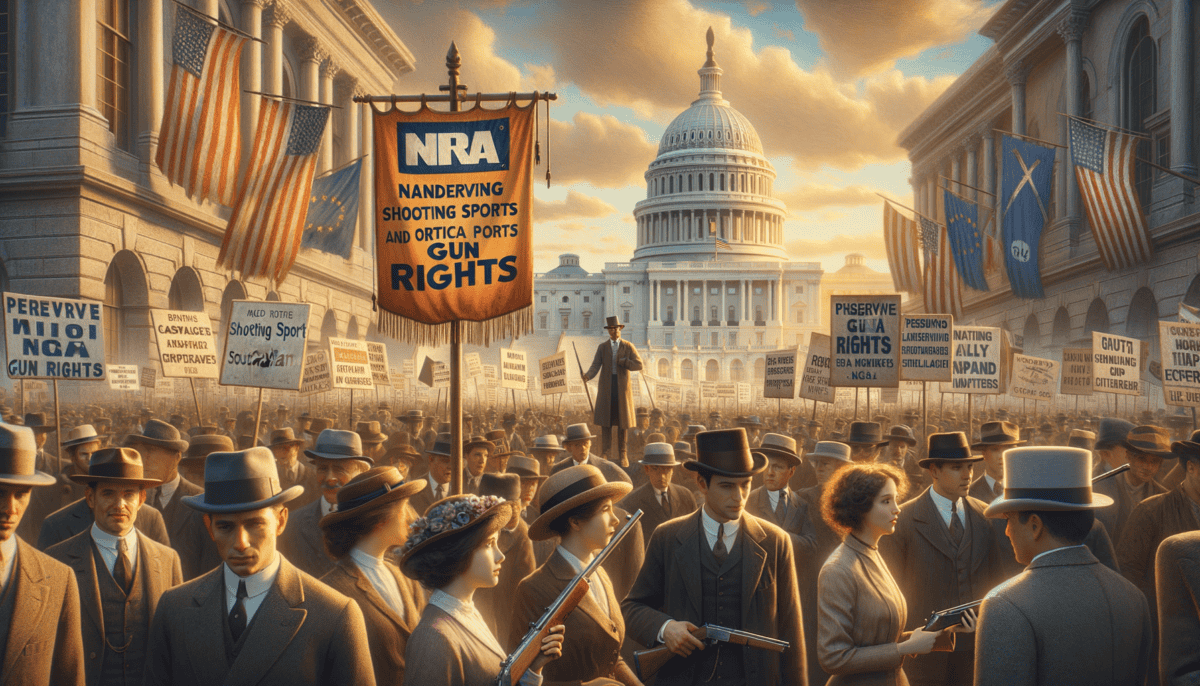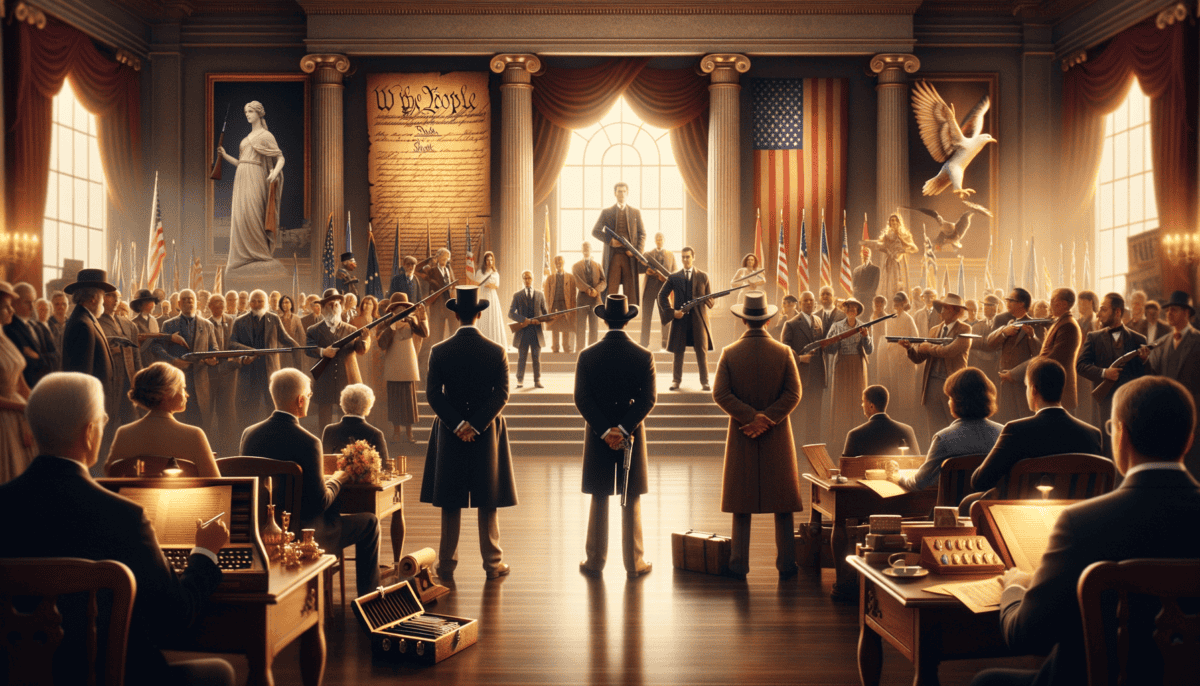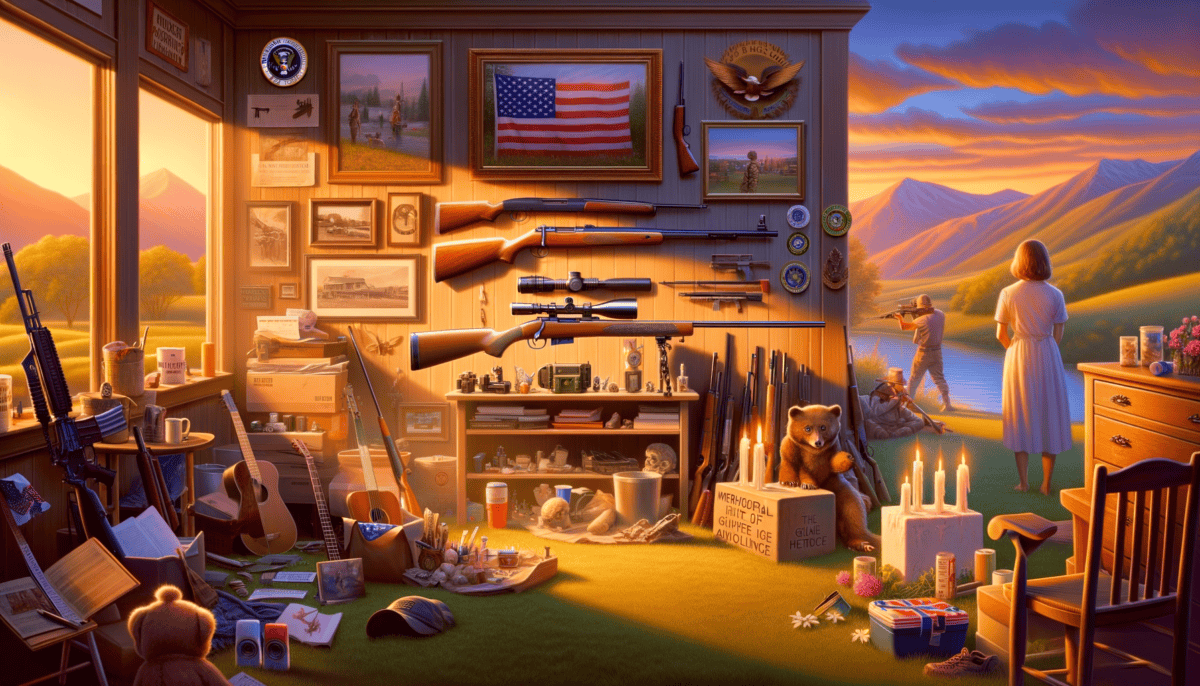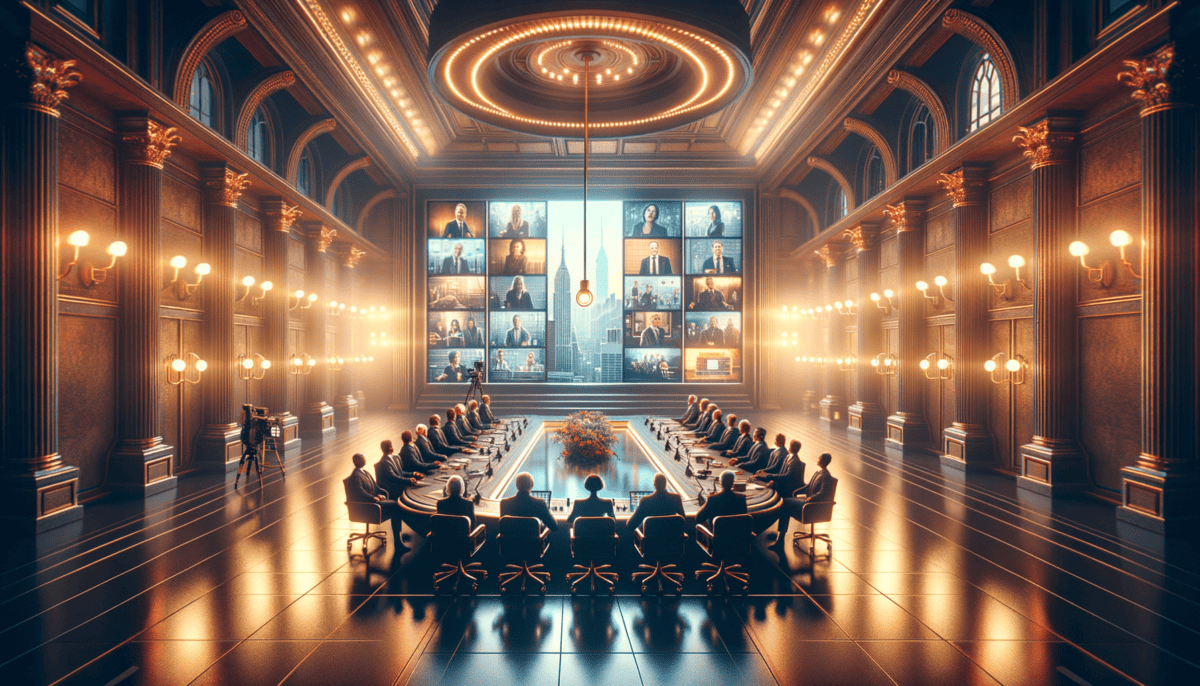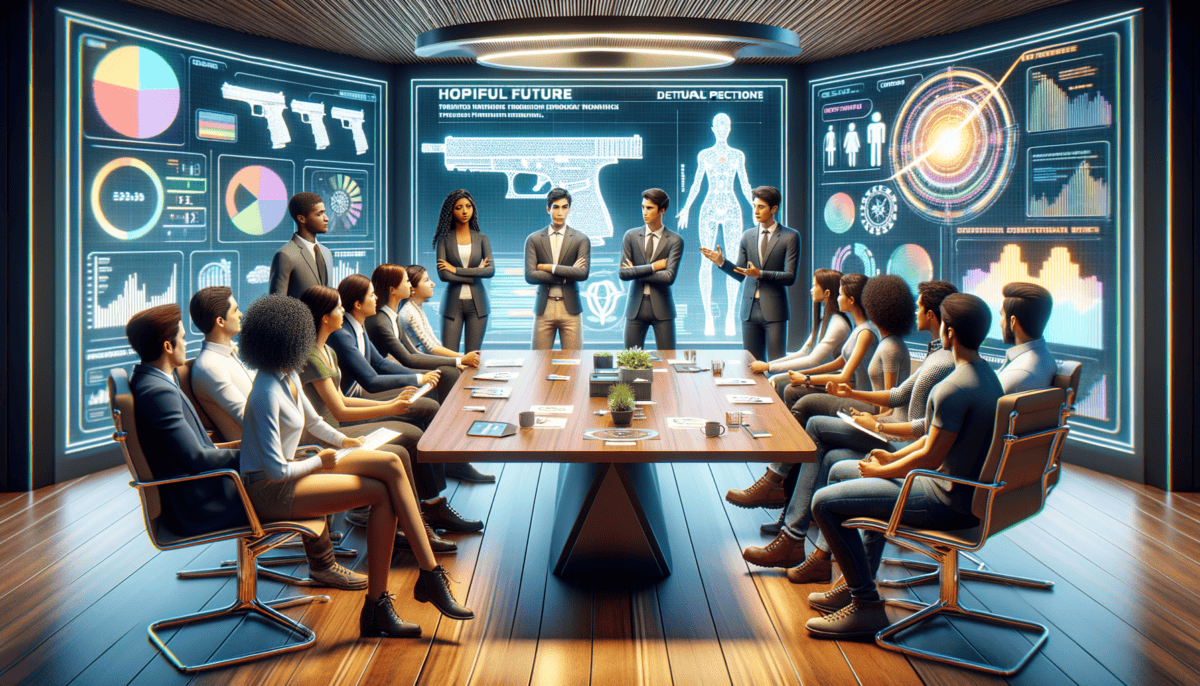The Founding Fathers of Marksmanship
It was a cold morning in 1871 when two soldiers met in New York. They had a big dream. Colonel William C. Church and General George Wingate wanted to help people learn to shoot better. They had seen too many soldiers in the Civil War who couldn't hit their targets.
"We need to teach Americans how to shoot straight," Colonel Church said to his friend. General Wingate nodded in agreement.
“Our soldiers were poor shots during the Civil War. We must do better.” – Colonel William C. Church
They started a group called the National Rifle Association, or NRA for short. It was like a school for shooting. They built their first big shooting range on a place called Creedmoor in New York. It was as big as 30 football fields put together!
The First Teachers of Shooting
The early NRA was different from what we know today. They were like gym teachers, but for shooting. They taught:
• How to hold a rifle safely
• How to aim at targets
• How to clean and take care of guns
• How to follow safety rules
President Ulysses S. Grant was one of the first members. He was a famous Civil War general who became president. Having him join made more people want to be part of the NRA.
Growing Bigger and Better
The NRA started small, but it grew fast. They helped the military train soldiers. They also helped regular people learn about guns. It was like a big club where everyone wanted to be the best shot.
"We're not just teaching shooting," General Wingate would say. "We're teaching discipline and responsibility."
Young people could join too. They had special programs for kids to learn about gun safety. It was like scouts, but focused on shooting sports.
The founders believed that knowing how to use a gun was an important skill. But they also taught that guns must be used carefully and wisely.
Building a Strong Foundation
By the end of their first year, the NRA had hundreds of members. They wrote books about shooting. They made rules for competitions. They even helped other countries learn about marksmanship.
They built more shooting ranges. Each one was like a classroom where people could practice. The best shooters would teach others. It was like a big family sharing what they knew.
The story of the NRA's beginning is about more than just guns. It's about people who wanted to make America better. They believed that good training and safety education were important.
Colonel Church and General Wingate would be amazed to see how their small club grew. What started as two friends with an idea became something much bigger. Their dream of teaching marksmanship changed America forever.
As the sun set on those early days, the foundation was set. The NRA would grow and change in ways its founders never imagined. But that's another part of the story…
From Training Ground to Political Stage
The little shooting club was growing up. By 1900, more people wanted to join the NRA. But something big was about to change.
“Times are different now,” said Frank Orth, an NRA leader in the 1930s. “We need to do more than just teach shooting.”
A New Kind of Fight
In 1934, something important happened. The government wanted to make new rules about guns. The NRA spoke up. They said, “We should help make these rules fair.”
“We want to protect the rights of good people who use guns safely.” – NRA leaders
They started talking to people in Washington D.C. It was like going from being a teacher to being a helper for all gun owners.
Growing Bigger and Stronger
More and more people joined the NRA. They came from all over America:
• Hunters who liked to hunt deer
• People who did shooting sports
• Folks who collected guns
• People who wanted to learn about gun safety ️
The NRA made a magazine called “The American Rifleman.” It helped people learn about guns and stay connected. It was like a letter from a friend who knew all about guns.
Teaching and Talking
The NRA still taught people about guns. But now they did more. They talked to lawmakers. They helped write gun safety rules. They were like a bridge between gun owners and the government.
“We need to keep our shooting ranges,” they said. “But we also need to make sure gun laws are fair.”
A Strong Voice
In the 1950s and 1960s, the NRA got even stronger. They opened a new office in Washington D.C. It was like having a special desk right where important decisions were made.
They started telling their members about new gun laws. If they didn’t like a law, they would say why. If they liked a law, they would support it.
Making Friends and Working Together
The NRA made friends with police officers and soldiers. They helped train them to shoot better. They gave money to shooting sports in schools and colleges.
They worked with stores that sold guns. They made sure these stores followed the rules. It was like being a helper for everyone who cared about guns.
By the end of the 1960s, the NRA was different from the small club that started in New York. It was now a big group that helped make laws and spoke for gun owners all over America.
More changes were coming. The quiet shooting club was becoming a loud voice in American politics. But that part of the story was just beginning…
Rights and Rules: The Big Debate
The sun was rising on a new day in America. The NRA was about to face its biggest challenge yet.
“What does the Second Amendment really mean?” asked Sarah Miller, a judge in 1975. This question would change everything.
Understanding Our Rights
The Second Amendment is like a special rule in America’s rulebook. It talks about guns. But people didn’t always agree about what it meant.
“A well regulated Militia, being necessary to the security of a free State, the right of the people to keep and bear Arms, shall not be infringed.”
Some people said it meant everyone could have guns. Others said it was just for soldiers.
Going to Court
In 2008, something big happened. A case called District of Columbia v. Heller went to the highest court. The NRA helped fight this case. ⚖️
Working Together and Fighting Back
The NRA worked hard to protect gun rights. They:
• Talked to lawmakers ️
• Wrote letters
• Made TV shows about gun safety
• Helped teach people about the law
“We need to keep people safe,” said Tom Peters, an NRA teacher. “But we also need to protect our rights.”
Different Ideas, Different Places
Not everyone agreed about guns. In big cities, many people wanted strict rules. In the country, people often wanted fewer rules.
“We can find ways to keep everyone happy,” they said. But it wasn’t easy.
Safety First
The NRA still cared about safety. They taught people:
• How to store guns safely
• When to use guns
• How to follow the law
Making Hard Choices
Sometimes the NRA had to make tough choices. Should they support new gun laws? Should they fight against them?
“We need to think about what’s best for everyone,” said Mary Thompson, an NRA leader.
Looking Forward
The debate about guns didn’t end. New questions came up. But the NRA kept working to protect gun rights.
They knew their job wasn’t done. More people were joining the conversation about guns in America. And the NRA would be there to speak up.
As the sun set on another day, the NRA knew tomorrow would bring new challenges. But they were ready to face them…
American Gun Stories: Different People, Different Views
The morning radio crackled with news about guns in America. Billy Thompson turned it up.
City Life and Country Life
Sarah lived in New York City. She never saw guns except on police officers. ️
“Guns scare me,” she told her friend. “I don’t think we need them here.”
But Tommy lived on a farm in Texas. He used guns to protect his chickens from foxes.
“My gun helps me take care of my farm,” Tommy said. “It’s like having a special tool.”
Meeting NRA Members
Let’s meet some NRA members:
• Mary – She teaches gun safety
• Joe – He likes target shooting
• Sam – He collects old guns
• Lisa – She hunts deer for food
When Bad Things Happen
“We must stop bad people,” said Police Chief Jones. “But good people should keep their rights.”
Changing Times
More people started talking about guns on TV and computers.
Some people made videos about gun safety. Others wrote about why they didn’t like guns.
Learning Together
“We can learn from each other,” said Mr. Rodriguez, an NRA teacher. He helped people understand:
• Gun safety rules
• Why some people like guns
• Why others don’t like guns
• How to be respectful of different views
Special Stories
James was a police officer. “I carry a gun to protect people,” he said. ♂️
Maria was a doctor. “I worry about gun accidents,” she said. ⚕️
Both wanted to keep people safe. They just had different ideas about how.
Finding Middle Ground
“Maybe we can find ways to make everyone happy,” said Bobby, a young student.
New Ideas Coming
Young people had fresh thoughts about guns. Some joined the NRA. Others started different groups.
The sun was setting, but the conversation wasn’t over. Tomorrow would bring new voices and new ideas about guns in America…
Digital Age Battles and Big Changes
The sun rose on a new day at NRA headquarters. Inside, phones buzzed with social media alerts.
Social Media Stories
Jenny, a young NRA worker, looked at her phone. “Wow! So many people are talking about us online!”
Some posts were happy. Some were mad. The internet made everyone’s voice louder.
“It’s like having a big town meeting, but on our phones,” Jenny said.
Money Matters
The NRA spent money to tell people what they thought was right. Other groups spent money too.
Inside Problems
The NRA had some trouble at home. Some leaders disagreed about what to do.
“We need to change with the times,” said Mr. Johnson, a new member.
“But we must keep our old values too,” said Mrs. Davis, who had been there longer.
What People Think Now
Important things people talked about:
• How to keep schools safe
• Ways to stop bad people from getting guns
• Teaching gun safety to more people
• Making better rules that everyone likes ⚖️
New Groups Rise Up
Some kids who saw scary things at school started new groups. They used phones and computers to talk to lots of people.
“We want to feel safe,” said Tommy, a high school student.
Finding New Ways
The NRA tried new things too:
Working Together
“Maybe we can find ways to make everyone feel safe AND keep our rights,” said Ms. Thompson, an NRA teacher.
“The world is changing. We need to change too, but in smart ways.”
Looking Forward
The sun was setting again. Jenny looked at her phone one more time. Tomorrow would bring more changes, more talks, and maybe some new answers…
The lights in the NRA building started going dark. But the conversation about guns in America was still very much alive…
Tomorrow’s Guardians
The morning sun peeked through the windows of the NRA’s youth training center. Billy, a young instructor, watched as kids learned about gun safety.
Cool New Tools
“Look at this!” Sarah showed her friends a special phone app that taught gun safety. It was like a fun game!
“Technology can help us be safer,” Billy smiled. “But remember, real guns aren’t toys.”
Young Leaders Rise
Tommy and Jenny started a new club. They wanted to teach kids about being safe AND having fun.
Finding Balance
Important things everyone agreed on:
• Keep guns away from bad people
• Teach safety to everyone
• Listen to different ideas
• Work together to solve problems
Smart Solutions
“We can use smart locks on guns now,” Billy explained. “They only work for the right person!”
Coming Together
Different groups started talking more. They found they had more in common than they thought!
The Big Picture
The NRA began changing too. They learned that being strong meant being smart.
“We can keep our traditions AND make new ones,” Tommy told the class.
Hope Ahead
The future looked bright. People were finding ways to respect both safety and rights.
As the sun set on another day, Billy watched his students leave. He knew the next generation would make things better. They would find new answers to old questions.
Tomorrow would bring new challenges. But with smart kids, new ideas, and people working together, the future looked bright. The balance between rights and safety would keep getting better, one day at a time. ⭐


